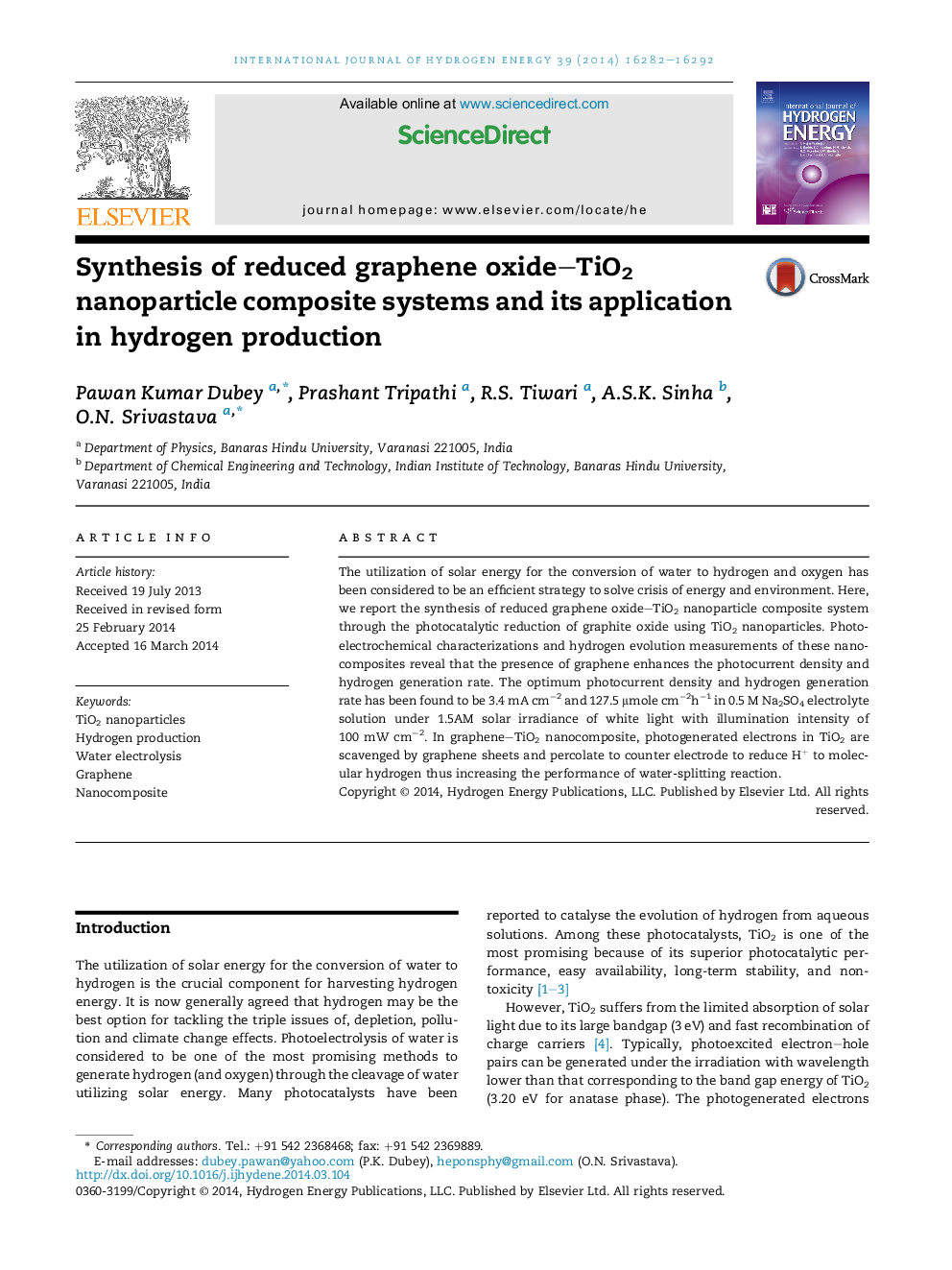| کد مقاله | کد نشریه | سال انتشار | مقاله انگلیسی | نسخه تمام متن |
|---|---|---|---|---|
| 1280966 | 1497480 | 2014 | 11 صفحه PDF | دانلود رایگان |

• Synthesis of reduced graphene oxide (rGO)- TiO2 nanocomposite through photocatalytic reduction of graphene oxide.
• Lowering and red shift in band gap due to increased absorption of solar spectrum.
• Hydrogen production through water cleavage using rGO-TiO2 nanocomposite as anode.
• Enhanced efficiency of solar energy to chemical fuel (hydrogen) conversion
The utilization of solar energy for the conversion of water to hydrogen and oxygen has been considered to be an efficient strategy to solve crisis of energy and environment. Here, we report the synthesis of reduced graphene oxide–TiO2 nanoparticle composite system through the photocatalytic reduction of graphite oxide using TiO2 nanoparticles. Photoelectrochemical characterizations and hydrogen evolution measurements of these nanocomposites reveal that the presence of graphene enhances the photocurrent density and hydrogen generation rate. The optimum photocurrent density and hydrogen generation rate has been found to be 3.4 mA cm−2 and 127.5 μmole cm−2h−1 in 0.5 M Na2SO4 electrolyte solution under 1.5AM solar irradiance of white light with illumination intensity of 100 mW cm−2. In graphene–TiO2 nanocomposite, photogenerated electrons in TiO2 are scavenged by graphene sheets and percolate to counter electrode to reduce H+ to molecular hydrogen thus increasing the performance of water-splitting reaction.
Reduced graphene oxide (rGO)–TiO2 nanoparticle composite system is prepared through the photocatalytic reduction of graphite oxide using TiO2 nanoparticles. Photoelectrochemical characterizations and hydrogen evolution measurements of these nanocomposites reveal that the presence of graphene sheets enhances the photocurrent density and hydrogen generation rate. In graphene–TiO2 nanocomposite, photogenerated electrons in TiO2 are scavenged by graphene sheets and percolate to counter electrode to reduce H+ to molecular hydrogen thus increasing the performance of water-splitting reaction.Figure optionsDownload as PowerPoint slide
Journal: International Journal of Hydrogen Energy - Volume 39, Issue 29, 2 October 2014, Pages 16282–16292